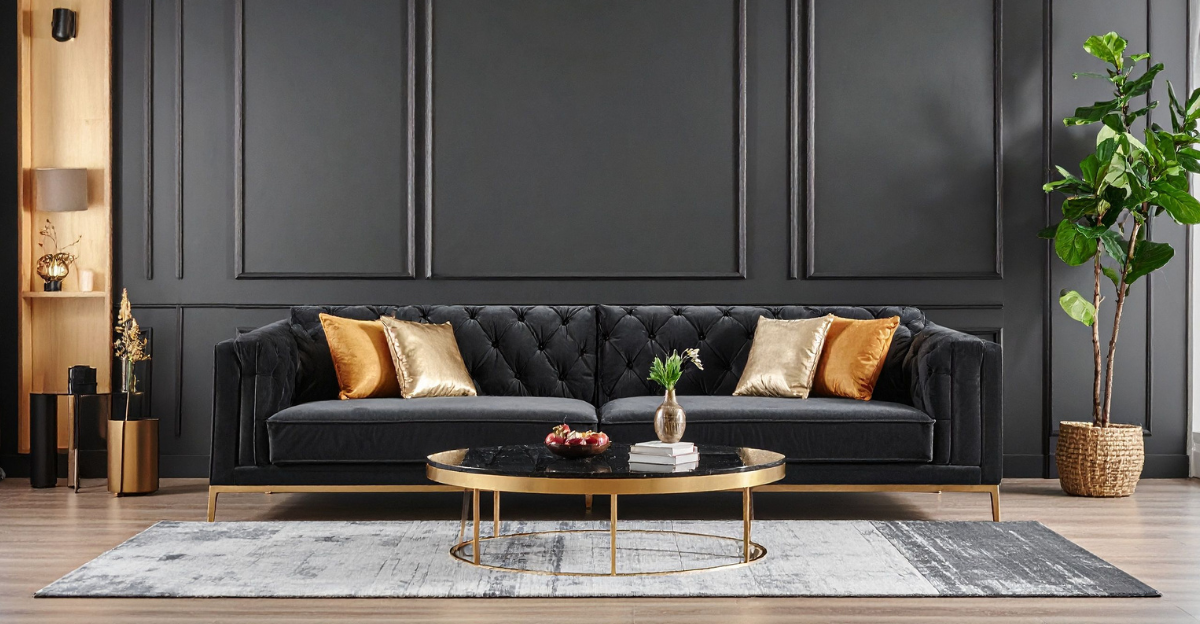An accent wall can transform any room from plain to polished in an instant. The trick is choosing a design that draws the eye without making the space feel busy or chaotic. Whether you prefer subtle textures, soft colors, or natural materials, the right accent wall adds personality while keeping your room balanced and inviting.
1. Tone-on-Tone Panel Molding
Panel molding creates dimension through shadow and light rather than bold color. By painting both the panels and the wall the same shade, you achieve elegance without visual noise. This approach works beautifully in dining rooms, bedrooms, or entryways where you want sophistication.
The raised frames catch light at different angles throughout the day, creating a subtle dance of depth. Installation is surprisingly straightforward with pre-made molding kits available at most hardware stores. Choose classic rectangles for traditional spaces or experiment with geometric patterns for contemporary vibes.
2. Vertical or Horizontal Wood Slats
Wood slats bring warmth and rhythm to any wall without overwhelming the senses. Running them vertically makes ceilings appear taller, while horizontal placement stretches the room wider visually. The gaps between slats add breathing room that prevents the design from feeling heavy.
Natural wood tones pair effortlessly with nearly any color palette you already have. You can stain them dark for drama or keep them light for an airy Scandinavian feel. Many homeowners love how slats hide minor wall imperfections while adding architectural interest that feels both modern and timeless.
3. Subtle Textured Plaster or Stucco
Textured plaster turns a flat surface into something you almost want to reach out and touch. The organic, handcrafted quality adds character that paint alone cannot achieve. Unlike busy patterns, these subtle variations create interest through touch and shadow rather than color contrast.
Mediterranean and Spanish-style homes have used this technique for centuries because it ages gracefully. Modern versions often feature softer, more refined textures that work in contemporary settings too. The beauty lies in how the texture shifts appearance as daylight moves across the surface throughout the day.
4. Lightly Patterned Wallpaper
Image Credit: © Max Vakhtbovycn / Pexels
Wallpaper has evolved far beyond the bold florals of decades past. Today’s subtle patterns offer just enough visual interest to elevate a space without screaming for attention. Think delicate botanicals, tiny geometrics, or soft watercolor effects that read almost like texture from a distance.
The key is choosing designs with low contrast between pattern and background. Soft grays, blush tones, or muted blues work wonderfully for bedrooms and offices. Installation has become easier with peel-and-stick options that let you experiment without permanent commitment or professional help required.
5. Painted Mural or Abstract Brushwork
Abstract murals let you bring art gallery vibes into your home without the gallery price tag. Soft brushstrokes in complementary colors create movement and emotion that feels personal and unique. Unlike traditional murals with defined images, abstract work blends into the background while still making a statement.
You can hire a local artist or tackle this yourself with painter’s tape and patience. Watercolor effects, ombre blends, or geometric color blocking all work beautifully. The artistic freedom means your accent wall becomes a true reflection of your taste and creativity.
6. Two-Tone Wall Split
Dividing a wall into two colors creates visual interest through simplicity itself. A horizontal split can make low ceilings feel higher when the top portion is lighter. Vertical splits work wonderfully to define different zones in open-concept spaces without adding physical barriers.
The color combination matters more than the split location. Stick with shades from the same color family or choose neutrals that complement each other naturally. Painter’s tape ensures a crisp line between colors, giving your DIY project a professional finish that looks intentional and polished.
7. Board and Batten or Wainscoting
Traditional board and batten brings farmhouse charm without the rustic overload. The vertical lines add height and structure, making rooms feel more finished and intentional. Wainscoting covers just the lower portion of walls, protecting high-traffic areas while adding timeless architectural detail.
Painted white or cream, these treatments brighten spaces rather than darken them. The repetitive pattern creates rhythm that feels calming rather than chaotic. Installation requires some carpentry skills, but the classic look never goes out of style and often increases home value significantly over time.
8. Reclaimed or Light-Stained Wood Planks
Reclaimed wood tells a story with every knot and weathered grain pattern visible. Each plank carries history and character that new materials simply cannot replicate. Light stains or natural finishes keep the look fresh and airy rather than dark and cabin-like.
Horizontal planks create a relaxed, beachy vibe perfect for bedrooms and living areas. The natural variation in wood tones adds depth without requiring paint or pattern. Many suppliers offer reclaimed barn wood that’s been cleaned and sealed, ready for installation that celebrates imperfection as beauty itself.








